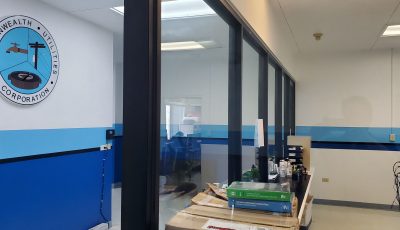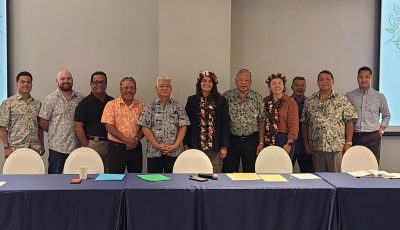EPA: $30M to improve water infra in Pacific territories
SAN FRANCISCO—The U.S. Environmental Protection Agency has announced the availability of nearly $2.6 billion in funds to assist states, tribes, and territories with improving drinking water and wastewater infrastructure across the country.
The U.S. territories of American Samoa, Guam, and the CNMI are eligible to re-ceive a total of $29.98 million.
This funding advances President Trump’s efforts to rebuild the country’s aging water infrastructure, create local jobs, and ensure all Americans have safe and clean water.
“EPA is delivering on President Trump’s commitment to modernize our nation’s water infrastructure and improve public health and environmental protections,” said EPA administrator Andrew Wheeler. “EPA’s $2.6 billion contribution to the State Revolving Funds will enable more communities to make the investments needed to en-sure Americans have safe water for drinking and recreation. These funds can also be combined with EPA’s WIFIA loans to create a powerful, innovative financing solution for major infrastructure projects nationwide.”
“EPA is investing in drinking water and wastewater infrastructure in American Samoa, Guam and the Northern Marianas Islands,” said EPA Pacific Southwest Region-al Administrator Mike Stoker. “With our Pacific Island partners, we’ll continue to im-prove the safety and reliability of our water resources for all.”
This year, EPA is making available across the nation more than $1 billion in new federal funding for the Drinking Water State Revolving Fund and approximately $1.6 billion in new federal funding for the Clean Water State Revolving Fund. EPA allots a portion of the State Revolving Funds as grants to the U.S. territories and allotments from both the DWSRF and CWSRF are combined into a single grant for each of the ter-ritories to be used for priority drinking water and clean water projects.
The Pacific territories are eligible to receive $11.2 million from the DWSRF and $18.7 million from the CWSRF. These funds will provide grants that help drinking wa-ter systems install controls to treat contaminants such as PFAS and improve distribu-tion systems by removing lead service lines, and a wide range of infrastructure pro-jects, including modernizing aging wastewater infrastructure, implementing water re-use and recycling, and addressing stormwater.
According to EPA’s estimate of national drinking water and wastewater needs, over $743 billion is needed for water infrastructure improvements. The State Revolv-ing Funds to the states, tribes and territories play an important part in meeting this need. Together, the SRFs have provided more than $170 billion. (EPA)



























